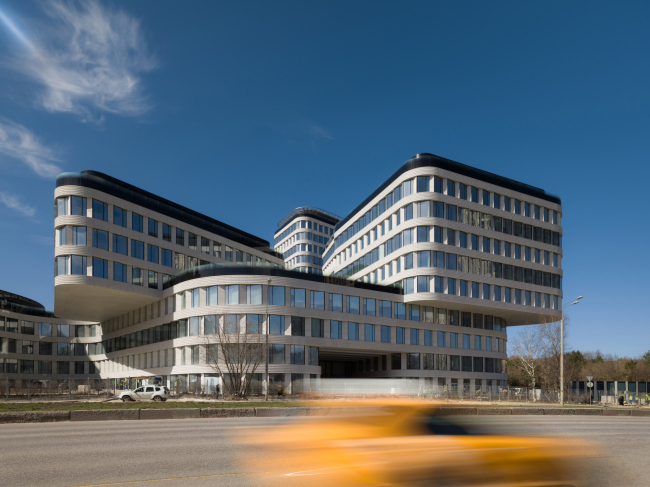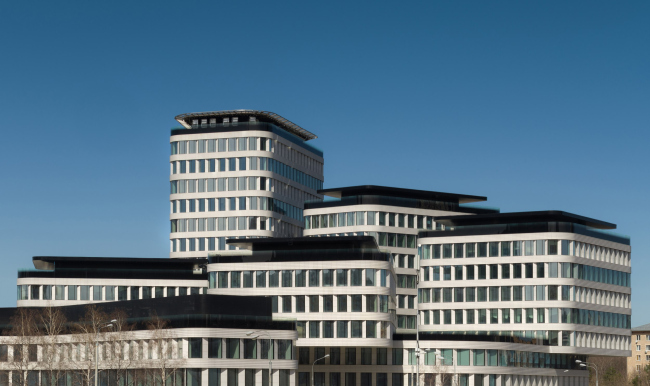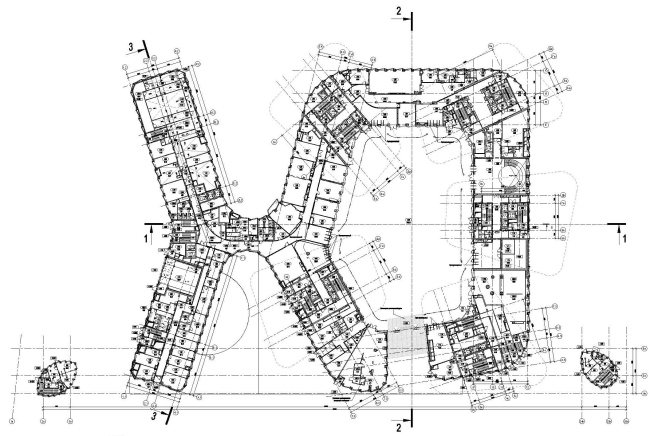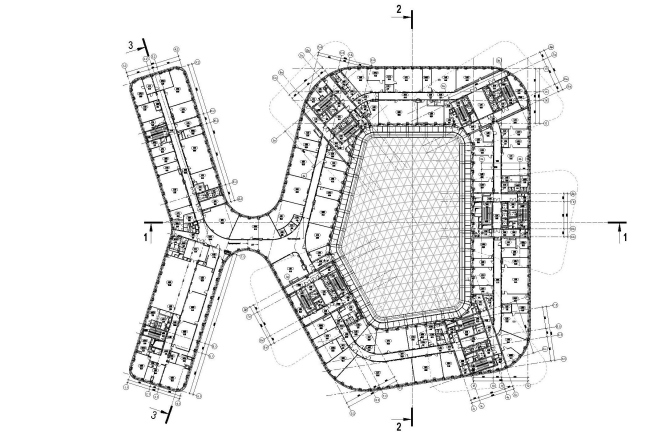The new headquarters building of the company “Novatek”
information:
-
status
building -
date
2017 —2018 / 2019 — 2022 -
place
Russia, Moscow
Leninsky Prospekt, 90/2 -
function
Office & Civic / -
Total Area
104 715,87 м2 -
height
67,55

Sergei Tchoban /
Russia
Alexey Ilyin /
Russia
SPEECH /
RussiaPartners and Clients
description:
The new office building of the company “Novatek” was constructed next to the company’s existing headquarters. The main task of the new complex was to bring all structural divisions of the company under one roof while ensuring that each of them maintains relative independence. This intention led to the compositional and planning concept of the complex: instead of a single building, we see five separate volumes. They are arranged along the outer perimeter of the site, while its central part is designed as an atrium fully covered by a column-free translucent roof. The elevation difference from Leninsky Prospekt toward the inner block reaches almost 4 meters, which made it possible to create an additional floor and is reflected in the landscaping design.
The project introduces a conditional division of the complex into blocks: the first four above-ground floors and the basement level form the stylobate, consisting of two blocks with a corridor system connected by a passage. One block is elongated and slightly curved, the other forms a closed loop; as a result, the stylobate resembles the letter “U” in plan. Or “a fish”, as the architects themselves call it. On top of the stylobate sit five towers of different heights, spreading outward like petals, each having a trapezoidal plan with rounded corners. For easier orientation, the towers are named with Latin letters A, B, C, D, and E, starting from the tallest. Tower A is 12 floors above the stylobate roof including the technical floor; B is 8; C is 6; D and E are 4 floors. The maximum height is 67.5 meters (for comparison, the first Novatek building is 46 meters tall). The tallest tower contains the executive offices, and its roof accommodates a helipad. All five towers cantilever over the street and over the atrium, with cantilever spans reaching 10–15 meters.
The atrium itself covers an area of 2,393 sq m. It is intended to host art objects, temporary exhibitions, and, naturally, function as a space for communication. The total area of the complex spatial glass roof exceeds 2,000 sq m; it rests only along the perimeter because, assembled from triangular glass units, it acts as a structural element itself. Interestingly, in addition to the complex internal structure of the beams, sprinklers are concealed in the core of each node. The entire structure consists of 285 types of triangular elements.
In plan, the complex as a whole and each building individually have the form of sloping polygons, which is further developed in the smooth lines of the façades. This allows the new complex to maintain continuity with the architectural design of the first office building; moreover, the soft outlines help visually “smooth out” the relatively close spacing between the towers. Rusticated stone belts, 1200 mm high, run around the perimeter between the floors and correspond to the rusticated vertical piers of the adjacent office building. The windows and vertical piers are rotated at a slight angle relative to the façade plane, forming a zigzag pattern in plan. All windows, except those on the 1st and 2nd floors facing the atrium, include a vertical operable sash 500 mm wide. On even floors, the windows and vertical stone piers are rotated in one direction; on odd floors and the basement level — in the opposite direction, which further emphasizes the building’s flowing form. Spanish granite is used as the main cladding material.
All roofs are paved and can be used as accessible terraces. Flat dark canopies cover each tower volume to conceal the technical equipment.
The building’s evening lighting concept includes illumination integrated into the horizontal belts (one of four grooves is activated) and the highlighting of each vertical pylon, turning the complex into a noticeable accent in the nighttime panorama of the avenue.
The small oval buildings flanking the site from the side of Leninsky Prospekt contain security posts, checkpoints, and evacuation exits from the underground levels. A two-level parking facility occupies the entire underground area of the site.







